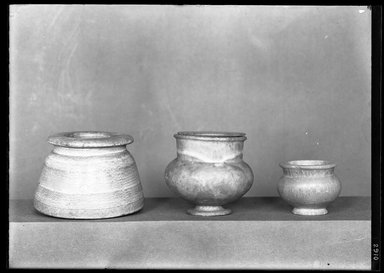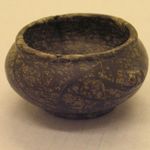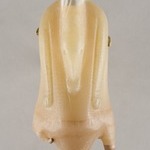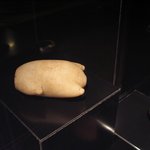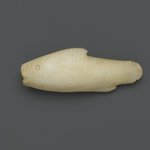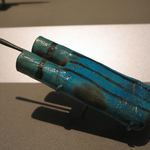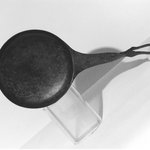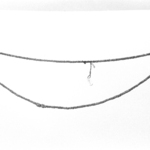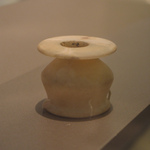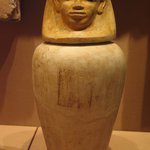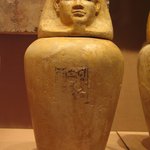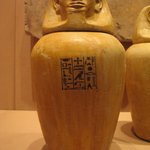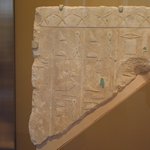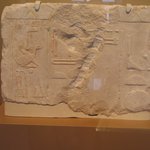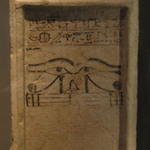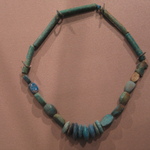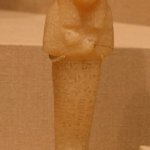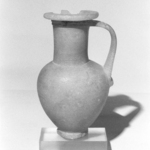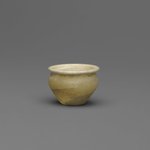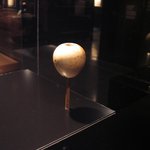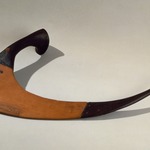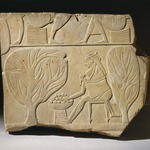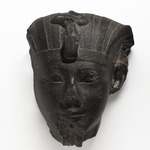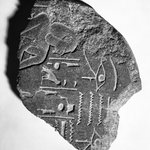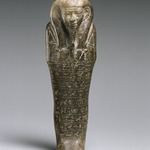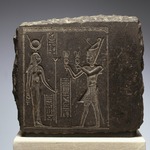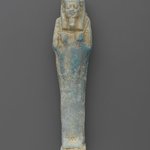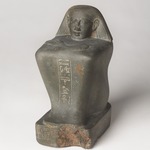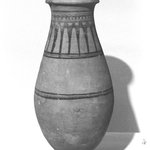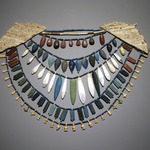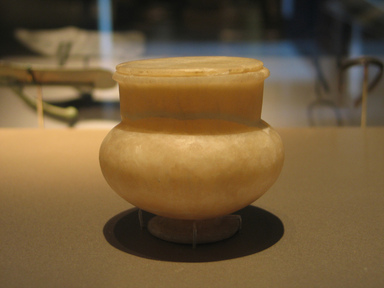
Footed Kohl Pot with Lid
Egyptian, Classical, Ancient Near Eastern Art
On View: Egyptian Orientation Gallery, 3rd Floor
Kohl Containers
Eye makeup has been used for millennia.
Ancient Egyptian men and women used a dark substance called kohl as eye makeup for nearly four thousand years, from the Predynastic Period until the Roman occupation in the fourth century c.e. Kohl emphasized the eyes, reduced sun glare, and repelled flies. The common presence of kohl containers in burials indicates that the Egyptians believed these concerns would continue in the afterlife.
Eye makeup has been used for millennia.
Ancient Egyptian men and women used a dark substance called kohl as eye makeup for nearly four thousand years, from the Predynastic Period until the Roman occupation in the fourth century c.e. Kohl emphasized the eyes, reduced sun glare, and repelled flies. The common presence of kohl containers in burials indicates that the Egyptians believed these concerns would continue in the afterlife.
MEDIUM
Egyptian alabaster (calcite)
DATES
ca. 1479–1425 B.C.E.
DYNASTY
Dynasty 18
PERIOD
New Kingdom
DIMENSIONS
37.397Ea: 2 3/4 x greatest diam. 3 1/8 in. (7 x 7.9 cm)
37.397Eb: 1/4 x greatest diam. 2 3/8 in. (0.6 x 6.1 cm) (show scale)



COLLECTIONS
Egyptian, Classical, Ancient Near Eastern Art
ACCESSION NUMBER
37.397Ea-c
CREDIT LINE
Charles Edwin Wilbour Fund
CATALOGUE DESCRIPTION
Alabaster vessel (37.397Ea) lid (37.397Eb) and foot (37.397Ec).
Condition: Foot made as a separate piece. Lid was once broken into four pieces which have since been repaired.
EXHIBITIONS
MUSEUM LOCATION
This item is on view in Egyptian Orientation Gallery, 3rd Floor
CAPTION
Footed Kohl Pot with Lid, ca. 1479–1425 B.C.E. Egyptian alabaster (calcite), 37.397Ea: 2 3/4 x greatest diam. 3 1/8 in. (7 x 7.9 cm). Brooklyn Museum, Charles Edwin Wilbour Fund, 37.397Ea-c. Creative Commons-BY (Photo: Brooklyn Museum, CUR.37.397Ea-c_erg456.jpg)
IMAGE
overall, CUR.37.397Ea-c_erg456.jpg. Brooklyn Museum photograph, 9/6/2007
"CUR" at the beginning of an image file name means that the image was created by a curatorial staff member. These study images may be digital point-and-shoot photographs, when we don\'t yet have high-quality studio photography, or they may be scans of older negatives, slides, or photographic prints, providing historical documentation of the object.
RIGHTS STATEMENT
Creative Commons-BY
You may download and use Brooklyn Museum images of this three-dimensional work in accordance with a Creative Commons license. Fair use, as understood under the United States Copyright Act, may also apply.
Please include caption information from this page and credit the Brooklyn Museum. If you need a high resolution file, please fill out our online application form (charges apply).
For further information about copyright, we recommend resources at the United States Library of Congress, Cornell University, Copyright and Cultural Institutions: Guidelines for U.S. Libraries, Archives, and Museums, and Copyright Watch.
For more information about the Museum's rights project, including how rights types are assigned, please see our blog posts on copyright.
If you have any information regarding this work and rights to it, please contact copyright@brooklynmuseum.org.
RECORD COMPLETENESS
Not every record you will find here is complete. More information is available for some works than for others, and some entries have been updated more recently. Records are frequently reviewed and revised, and we welcome any additional information you might have.
